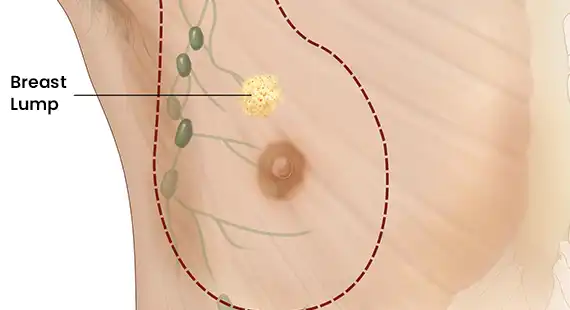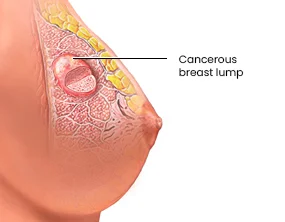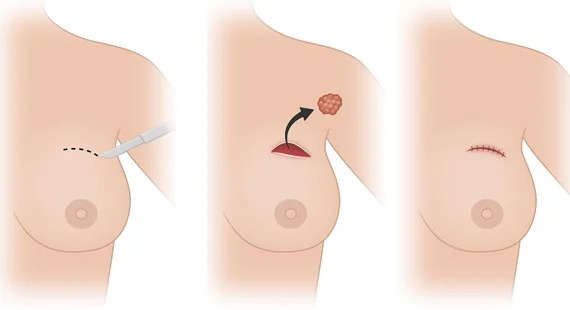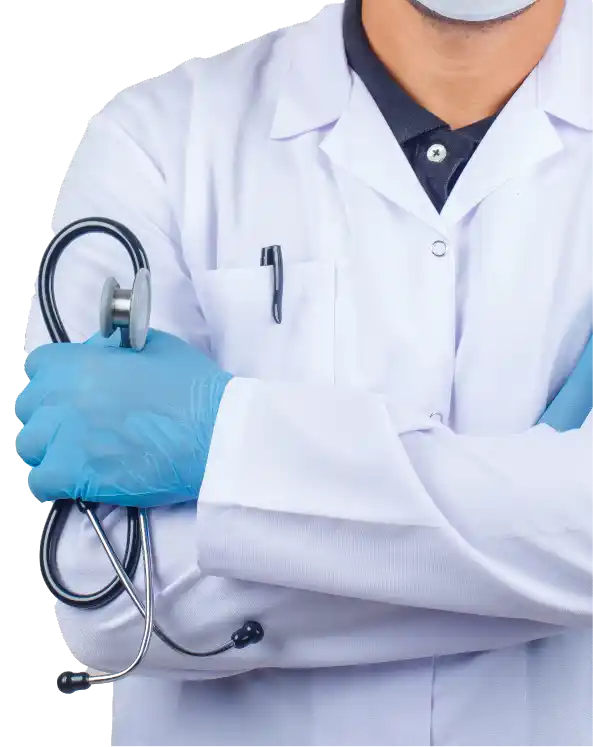Breast Lump- Meaning, Types, Causes, Symptoms & Treatment
Breast lumps are a common health problem among adult women. Breast lumps are mostly benign, but they may be the first indication of breast cancer development. The lumps may occur due to cysts, fibroadenoma, fat necrosis, infection, and trauma. The lumps are not dangerous but can provoke anxiety.

WHAT IS A BREAST LUMP?
A breast lump is a characteristic swelling or bulged mass in the breast that can be easily noticed by the patient and the general physician. Breast lumps can be benign (non-cancerous) or malignant (cancerous). Benign breast lumps are more common than malignant ones and are usually not a cause for concern. However, any breast lump should be evaluated by a healthcare professional to rule out the possibility of cancer.
Breast lumps can be caused by a variety of factors, including hormonal changes, infections, cysts, and tumors. It is important for individuals to perform regular breast self-exams and to report any changes in the breast tissue to a healthcare professional. Early detection and treatment of breast lumps can improve the chances of successful treatment and improve overall outcomes.

TYPES OF BREAST LUMPS
Cancerous breast lumps
The type of breast lump that is often painless, with tough surroundings and irregular shape.
1

Non-cancerous breast lumps
Breast cysts - A type of breast lump that is soft and filled with fluid Fibroadenoma - the most common type of benign breast lump that occurs in women
2

CAUSES
- Cysts
- Fibroadenoma
- fat necrosis
- Infection
- Trauma
- Fibrocystic breasts
- Breast cancer
HOW IS IT FORMED
A breast lump is formed due to the accumulation of infectious fluid in the breast tissues. It may cause inflammation, pain, and swelling in the breast tissues. Hormonal changes during the menstrual cycle, pregnancy, and menopause can cause the breast tissue to become more dense or lumpy, leading to the formation of breast lumps. Fibroadenomas are benign tumors that can develop in the breast tissue. Infections, such as mastitis, can cause breast lumps. Mastitis is an infection of the breast tissue that can occur during breastfeeding.

SYMPTOMS
- Swelling
- Pain in the bulged mass
- Red or pale skin
- Abnormal discharge

DIAGNOSIS
- Physical examination
- Mammogram
- Breast ultrasound
- Breast biopsy
- MRI
- CT scan
DO's
DONT's
TREATMENTS
NON-SURGICAL TREATMENTS

Antibiotics: Antibiotics are prescribed by the doctors in case of any bacterial infection in the braest lump
NSAIDs (Non-steroidal anti-inflammatory drugs) : NSAIDs like ibuprofen are helpful in managing pain in the breast lump.
If the breast lump is found to be cancerous, the following treatments are recommended:
Chemotherapy : The treatment strategy that uses drugs in order to kill cancerous cells
Radiation therapy : The treatment strategy that uses rays that can kill malignant cells.
SURGICAL TREATMENTS

The surgical treatment of breast lump is recommended if the lump grows or there is a change in appearance.
Lumpectomy (or breast excisional surgery): The surgical procedure of removing the breast lump or other tissue around the breast. It is a day care procedure wherein the women who undergoes lumpectomy can go home the same day after the procedure.
RISKS AND COMPLICATIONS
Factors that increases the risk of developing breast lumps are:
- Puberty
- Menopause
- Breast cancer history
- Ovarian cancer

IF LEFT UNTREATED
If the benign breast lumps are left untreated, they may develop into cancerous lumps. The cancerous lumps may spread to other body parts (metastasize), increasing health complications.
COST
The average cost of breast lump excision surgery to treat breast lump is ₹30,000 - ₹40,000. The cost varies on the type of surgical procedure, hospital facilities, and cities.
Financial Options

INSURANCE COVERAGE
Health insurance coverage for breast lumps may vary depending on the specific plan and policy. Generally, insurance plans will cover diagnostic tests, such as mammograms, ultrasounds, and biopsies, as well as any necessary surgical or medical treatments, such as lumpectomy or mastectomy.
However, it is important to check with the insurance provider to determine the specific coverage and any potential out-of-pocket expenses, deductibles, or copayments. It is also important to note that pre-existing conditions or prior breast cancer diagnoses may impact coverage and may require additional documentation or approval from the insurance provider.

Know more about Breast lumps
A breast lump is a mass or swelling in the breast tissue that feels different from the surrounding tissue. Breast lumps can be caused by a variety of factors, including hormonal changes, infections, cysts, and tumors.
Breast lumps can be benign (non-cancerous) or malignant (cancerous). Benign breast lumps are more common than malignant ones and are usually not a cause for concern. However, any breast lump should be evaluated by a healthcare professional to rule out the possibility of cancer.
Treatment for a breast lump depends on the underlying cause. If the lump is benign, treatment may not be necessary, although monitoring the lump with regular check-ups may be recommended. If the lump is cancerous, treatment options may include surgery, radiation therapy, chemotherapy, or hormone therapy.
Having concerns about breast lumps and looking for the Best Doctors or surgeons. Sit back & Relax as Glamyo Health has got you covered! Glamyo Health is a healthcare brand operating in almost all elective and cosmetic surgeries, with a chain of hospitals and clinics operating in 40+ cities.
 New Delhi
New Delhi  Bangalore
Bangalore  Mumbai
Mumbai  Hyderabad
Hyderabad  Pune
Pune  Chennai
Chennai 
